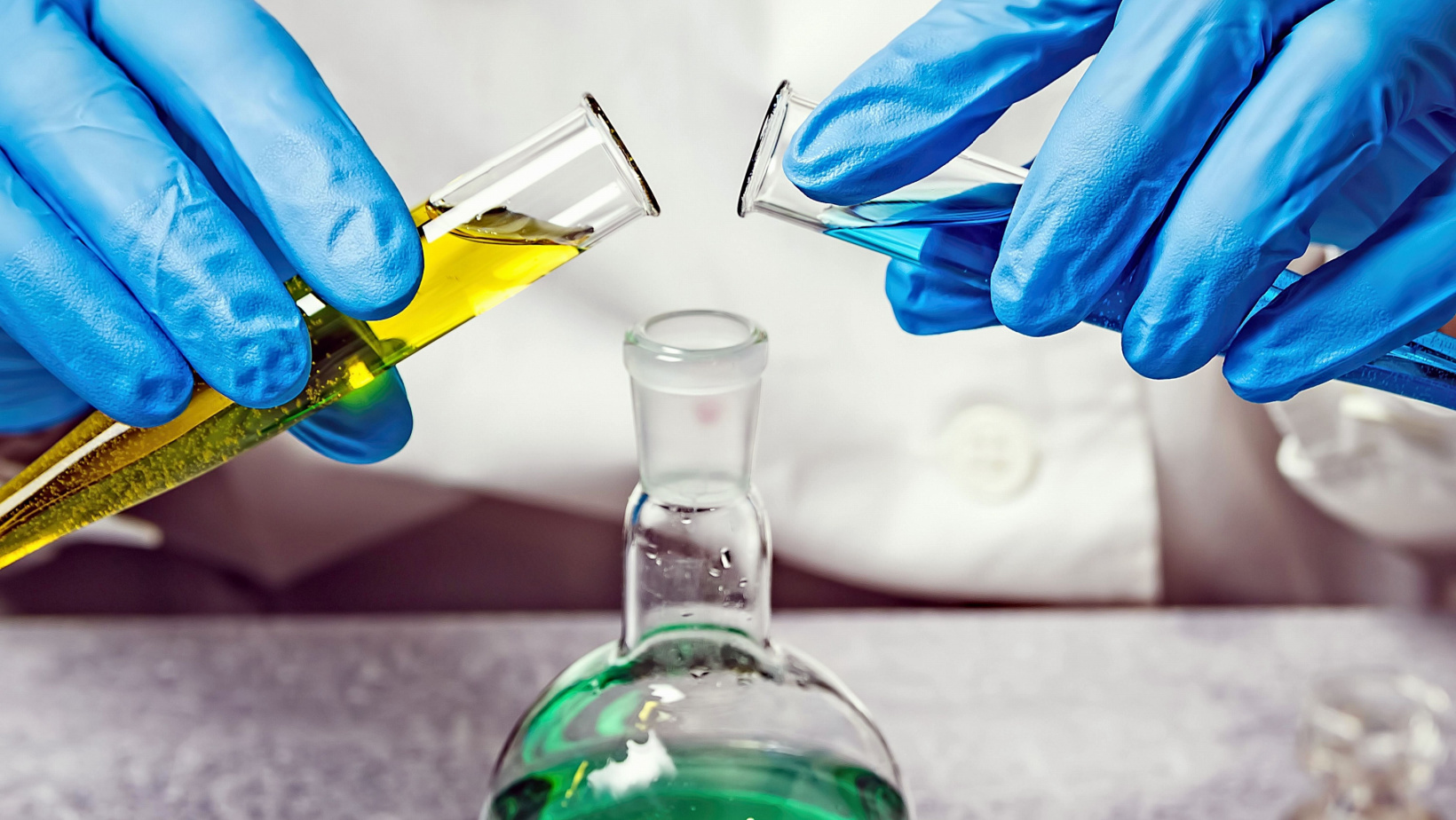A common challenge for the advanced alchemist is trying to get a better, more stable emulsion through combining emulsifiers. There are endless combinations and possibilities for rigorous R&D. In this article, we are providing the basics of how to embark on the journey of blending up the right emulsifiers. Note that this article talks specifically about Oil-In-Water (O/W) emulsions, where the quantity of oil is less than the quantity of water.
1. What you need to know about your emulsifier
Emulsifiers are any additive that bring together two or more ingredients that would not normally combine, think oil and water.
The first thing to know about emulsifiers is that each has a number that indicates if it works better in water or in oil. This number is called its HLB value, which refers to the Hydrophilic Lipophilic Balance (HLB). HLB values from 0-8 are lipophilic (fat loving) in nature, and work well for water in oil emulsions where oil represents a larger portion than water. HLB values between 9-15 are hydrophilic (water loving) in nature, and work better with oil in water emulsions where water represents a larger portion than oil.g within the intended emulsion.
Common food grade emulsifiers and their HLB values
Note that this is only a small sampling of all the emulsifiers available out there.
| Emulsifier | HLB value |
| Lecithin (powder)(sunflower)(soy) | 9 (+/- 1) |
| Mono and diglyceride flakes | 3-6 |
| Gum arabic/ acacia | 10/11 |
| Sodium oleate | 16.9 |
| Polysorbate 20 | 16.7 |
| Polysorbate 80 | 15 |
| Sodium caseinate | 14 |
| Polyethylene glycol 400 | 12.8 |
| Sodium stearoyl lactylate | 8.3 |
| Sorbitan monolaurate (span 20) | 6.1 |
| Lecithin (liquid)(sunflower)(soy) | 4 |
| Glycerol Monostearate | 3.8 |
| Sorbitan monooleate (span 80) | 3.8 |
2. What you need to know about the oil being emulsified
Oils also have an HLB requirement that functions much in the same way that emulsifiers do.
Required HLB of common Fats
| Fat | HLB requirement |
| Beeswax | 12 |
| Coconut oil | 8 |
| Canola oil | 7 |
| Grapeseed oil | 7 |
| Hemp seed oil | 7 |
| Olive oil | 7 |
| Sunflower oil | 7 |
| Almond oil | 6 |
| Cocoa butter | 6 |
| Peanut oil | 6 |
If your formulation is a blend of oils, use the formula below to calculate the HLB requirement for your oil blend.
For example that our carrying oil is a blend of two or more oils, is there a way to calculate their required HLB? The answer, of course, is yes! Some simple algebra can allow us to calculate the HLB requirement of any known mixture of oil as long as we keep track of their % by volume. In this example, a mixture of coconut oil (HLB 8) at 30% solution and canola oil (HLB 7) at 70% solution will be our carrying oil.
In this scenario we take the known percentage of oil and multiply with the HLB value for that oil, then add them together for our new HLB requirement.
HLB requirement= (% of oil #1 x HLB requirement #1)+(% of oil #2 x HLB requirement #2)
*used for blends in oil
Coconut oil: (0.3)(HLB 8)= 2.4
Canola oil: (0.7)(HLB 7)= 4.9
Adding these together : 7.3 HLB required for the mixture.
3. How to pick the right emulsifiers
In order for an emulsion to be more stable, the HLB requirement of the oil being emulsified should match the HLB value of the emulsifiers used .For best results, using two emulsifiers (one with a high HLB and one with a low HLB value) will create a more stable emulsion that pulls water into an oil phase, and oil into the water phase.
Use these equations to calculate the HLB requirement and value of your emulsion:
% of high HLB= (Required HLB of oil – low HLB value)/(High HLB value – Low HLB value)
% of low HLB= 1 – % of high HLB
Example:
Canola oil HLB requirement= 7
Polysorbate 80 HLB value= 15 (high HLB)
Liquid lecithin HLB value= 4 (low HLB)
What ratio of emulsifier should be used?
% of high HLB (polysorbate)= (7-4)/(15-4)=0.273 or 27.3%
% of low HLB (lecithin)=1 – 0.273= 0.727 or 72.7%
Check your work:
(0.273×15)+(0.727×4)=4.10+2.91=7✔
4. How much total emulsifier do I use?
Now that you have a ratio of emulsifiers, it’s time to calculate how much to use in your recipe. This is typically a phase that requires additional R&D as you test out a range of ratios to figure out the best one. We typically recommend starting at around 0.5% by weight of your total liquid weight (oil + water) and adjusting up by 0.5%. You should find that there is an varying amount of stability, and once you’ve added too much the emulsion will break faster.
5. How to add the emulsifiers to the solution?
To create your emulsion, add your high HLB emulsifier to water, add your low HLB emulsifier to fat. Make sure to note the temperature requirements, if any, for dissolving the emulsifiers. Some will hydrate at room temperature, some need to be heated.
Using a food processor/ immersion blender, create a vortex in your water phase and slowly add your oil (containing emulsifier) to create the emulsion. Adding in a slow continuous pace will keep the emulsion from breaking and separating, be patient and don’t rush.
Questions? Email us at service@modernistpantry.com


